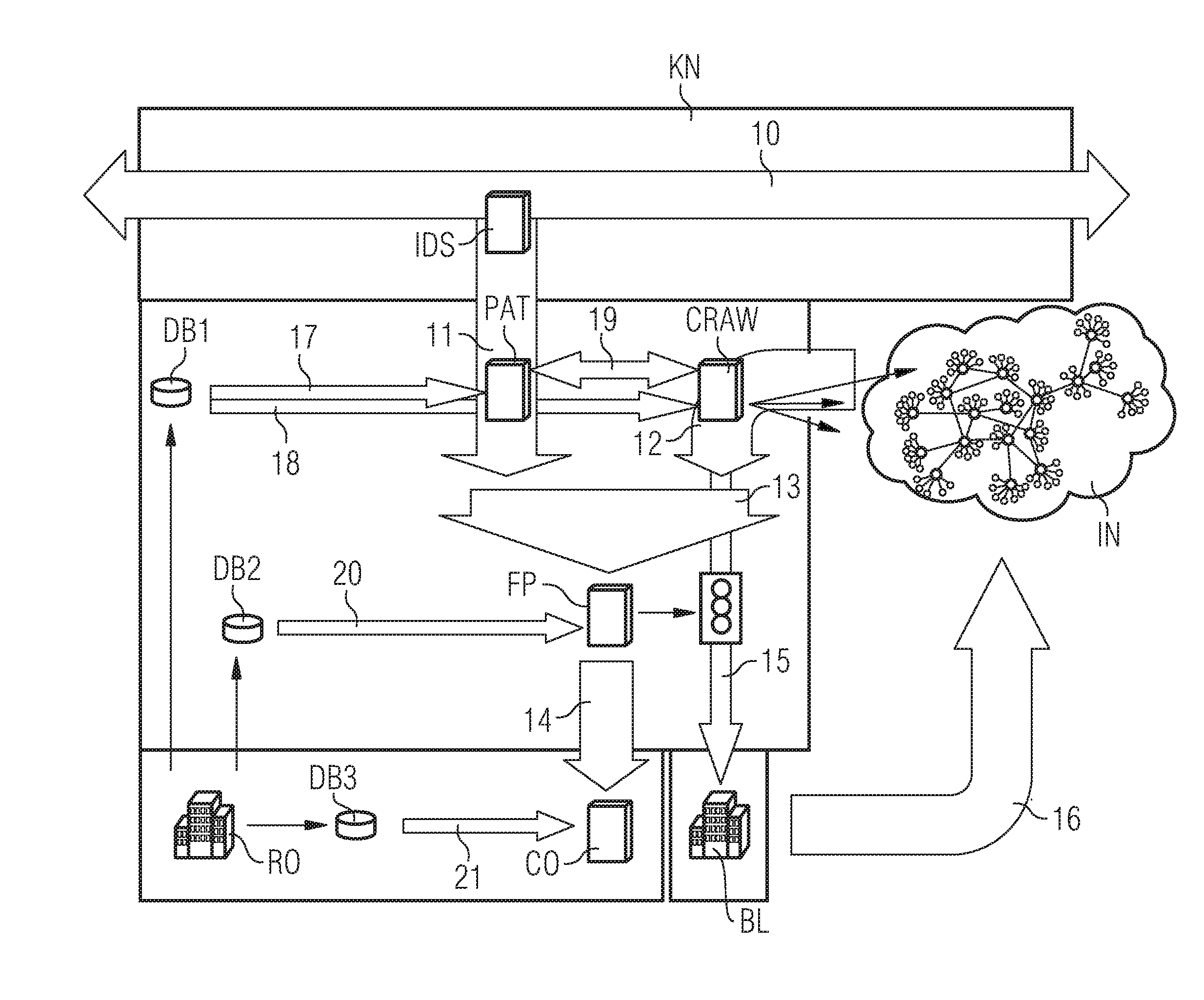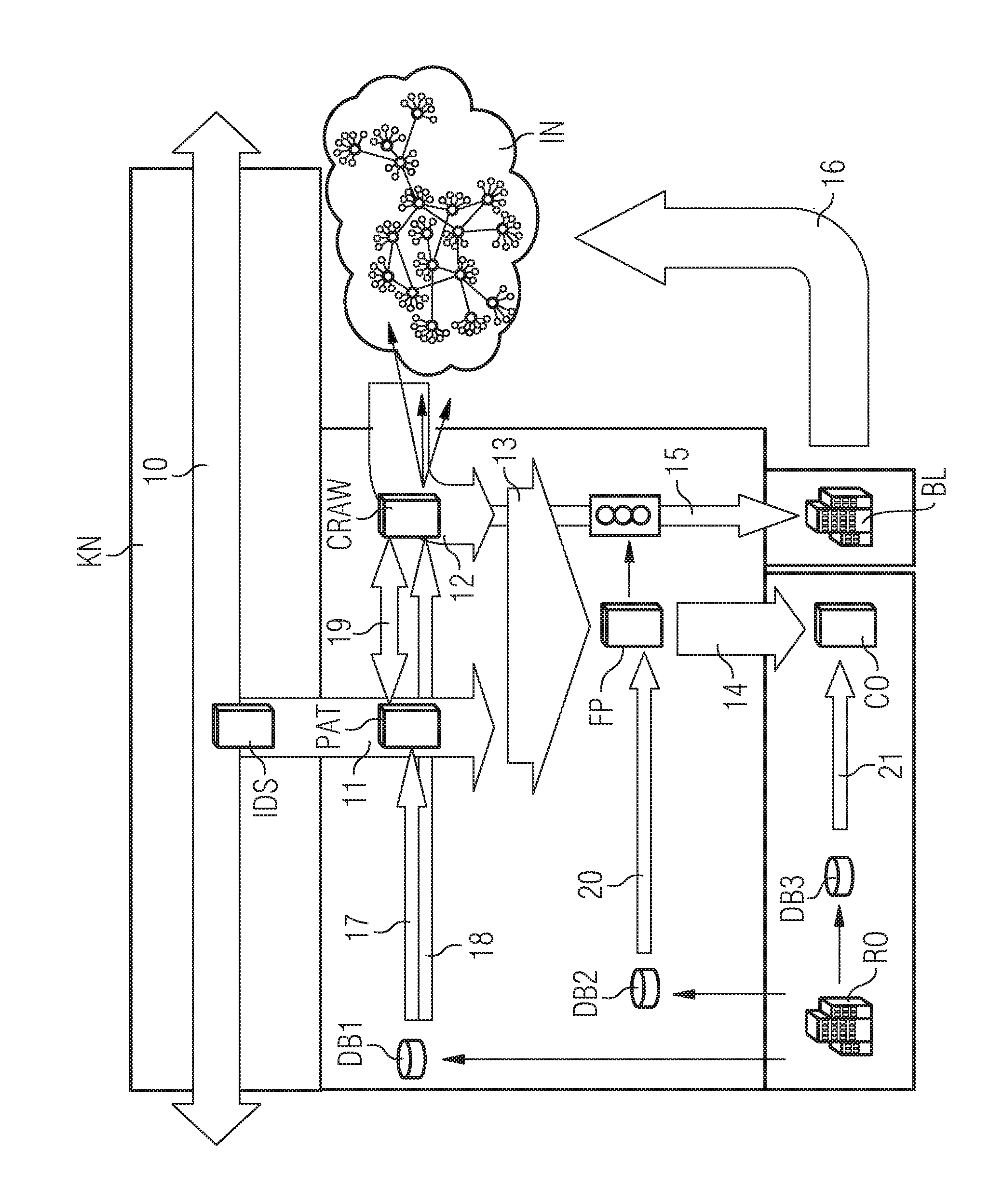Method and communication system for the computer-aided detection and identification of copyrighted contents
- Summary
- Abstract
- Description
- Claims
- Application Information
AI Technical Summary
Benefits of technology
Problems solved by technology
Method used
Image
Examples
Embodiment Construction
[0050]In FIG. 1, IN denotes a communication network, such as the Internet. The communication network IN may have a multiplicity of communication networks which are managed by respective providers. The communication network IN hosts peer-to-peer file sharing services, with a multiplicity of users. Examples of such peer-to-peer file sharing services are KaZaA, Bittorent, eMule and many others. These peer-to-peer file sharing services are used to exchange contents stored in digital form, such as songs and films, between the individual members of the peer-to-peer file sharing services. In this case, the data available in digitized form often comprise copyrighted content.
[0051]The communication network denoted by KN is one of the multiplicity of communication networks on the Internet (communication network IN) which are managed by various providers. Reference symbol 10 identifies a data stream which is transmitted by the communication network KN and which is routed through a network node...
PUM
 Login to View More
Login to View More Abstract
Description
Claims
Application Information
 Login to View More
Login to View More - R&D
- Intellectual Property
- Life Sciences
- Materials
- Tech Scout
- Unparalleled Data Quality
- Higher Quality Content
- 60% Fewer Hallucinations
Browse by: Latest US Patents, China's latest patents, Technical Efficacy Thesaurus, Application Domain, Technology Topic, Popular Technical Reports.
© 2025 PatSnap. All rights reserved.Legal|Privacy policy|Modern Slavery Act Transparency Statement|Sitemap|About US| Contact US: help@patsnap.com


